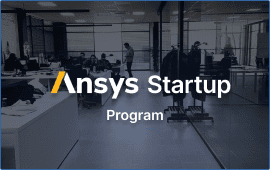Over the years I have learned to do more with less. When it comes to information systems world, you all know the equation is often much more with much less. One of my to-do’s over the years, umm that continued to get bumped down on the priorities list. It is the juggling act of making sure that the data center has enough cooling vs. power vs. yes again in AZ cooling. If you are an IT professional or even an Engineer you really don’t have time to attempt to try to convince someone, anyone that we need to speed more money. Even if you use the effective philosophy of Time, Money and Quality. After dealing recently “wish ware software vendors this past year” I added a fourth dimension to the above philosophy. It’s called Functionality; here is what Merriam Webster had to say about Functionality. The quality or state of being functional; especially: the set of functions or capabilities associated with computer software or hardware or an electronic device. http://www.merriam-webster.com/dictionary/functionality?show=0&t=1307146105
- Time – Try searching the internet for terms such as data center cooling calculator, data center cooling costs or how can I save money with our data center cooling? You will suddenly have millions of search queries at your beckon. From video blogs on data center cooling, white papers on optimizing IT strategy on data center cooling. It is endless 3 million plus hits on just one search term data center cooling calculator. Wow, Start researching my young padawon learner, fill out those lead generating white papers. Keep it simple…
- Money – I would prefer that we used or dollars on buying a server with a couple INTEL XEON ET-8870 processor. Or how about a QUAD based AMD FX-8130P processor server! I do not have any budget for a I am sure fabulous data center cost benefit crisis analysis.
- Quality – Can I even understand what the end-result document white paper will read. Will I look like even more of an idiot? This needs to be accurate information. I will have to do it myself or use a third party data center analysis.
- Functionality – Will our current air conditioners hold up this year? What about when we hit 120 degrees? Oh my do I need to add more cooling power?
Wikipedia on British Thermal Unit (BTU) – http://en.wikipedia.org/wiki/British_thermal_unit
So why I care about a BTU? Because approximately one “ton of cooling”, which is a typical way people talk about cooling devices in the USA, is 12,000 BTU/h. This is the amount of power needed to melt one short ton of ice in 24 hours. Locked away in a climate controlled vault is one of my data centers. “Said such vault may or may not contain the following items on any given day.” After all this is a mobile compute server world these days.
- 13 Servers
- 174 Cores (Mix of Windows/Linux servers)
- 2 – Network Routers
- 3 – Network Switches
- Phone System
- Voice Mail System
- 1 LCD 20” monitor/KVM
Go Green in the Data Center! First, let’s get a “Cool Grip” on your data center…16,484.058 BTU/h
A couple years ago one of the our ANSYS Mechanical Simulation Engineers named Jason Krantz told me about a watt meter device. A handy little watt meter monitoring device designed by P3 International KILL A WATT™. Over the years that little watt meter devices has become one of closest friends and ally in IT. Today, I was able to quickly asses (realistically about four hours of time) just how many Watts of power each one of our servers, network devices, etc. used. I tried to be as accurate as I could without having to take out a second mortgage. So I made sure and verified that one of our PHD FE Analyst or CFD Analysts had our servers at our near 100% CPU use.
YOUTUBE VIDEO :: Check out this real-world example of a AMD Opteron 6174, 287 hour electrical cost usage test. The data shown in this video is of a server that has four AMD Opteron 6174 processors installed.
So, what is your magical number? Ours is 4,831 Watts
Do you know how many watts of power your server room is using? could you even logically guess what that number is? Our magical number for server room #1 turned out to be 4,831 Watts. I do need to state that I was unable to take some of the devices offline. When that was the case I used data pulled from the actual technical documents of the device’s manufacture website.
So what is your BTU/h number? Ours is 16,484.058 BTU/h? Oh and I don’t even like math? I know, I know, math was solved and perfected centuries ago. But how do I convert Watts into BTU?
I used a 99 cent app that I bought off of the iTunes App store called “Convert Units”.
- Step 1 – Convert Watts into BTU/m
- Step 2 – Then multiplied by 60 to get that value into BTU/h.
- Step 3 – Speak to your Operations Department, send an email, shout from the rooftops!! We need at least a two ton Air Conditioning unit for Server Room #1
Now with the precious BTU/h value in hand. I was able to speak the same language as that of our Director of Operations & Facilities manager.
I wish you all could have been there when I walked up to Scott and told him the news. The dialogue went something like this:
“Scott I wanted to talk to you about server room #1’s cooling situation…(pause for dramatic expression). Almost immediately you could see Scott’s blood pressure rising. Scott’s brain quickly churning through mountains of Air Conditioning cooling information and data. I quickly calmed his anxiety and said these exact words. “Server Room #1’s BTU/h ratio is approximately 16,484.058 BTU/h.” It took Scott just a moment for this bit of information to register. I do believe that I actually heard the hallelujah chorus in the heavens. I could also see the peace that passes all understanding come across Scott’s face. It was if I could read his mind and he was thinking how is this non-operation/facilities type humanoid speaking my language? For Scott knew immediately that he had enough cooling power at this moment into to cool that data center down all summer long.
DATA CENTER #1 – 274.7343 BTU/m*60 = 16,484.058 BTU/h
How the heck are you making money today? Step out of the Box, Step Into a Cube Computers for CFD and FEA Simulation. http://www.cube-hvpc.com/


















